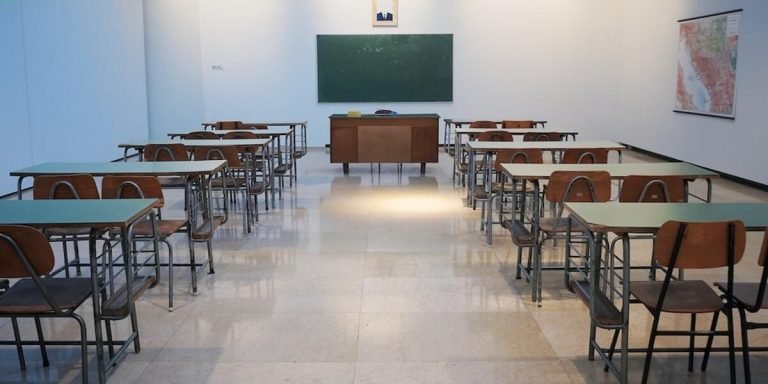Intermediate School: Decoding the Transitional Phase in Education
The “intermediate school” phase can often be an enigma to parents and educators alike. It’s a transitional stage where children are no longer considered elementary but not yet high school students; it’s like the middle child of the education system, sometimes misunderstood or overlooked. Its significance, however, is pivotal in shaping young learners for future challenges.
Understanding this educational period requires us to unpack its multi-layered structure that consists of academic progressions, emotional changes and social dynamics. This post aims at exploring these aspects with an analytical eye while offering insights on how best we can guide our youngsters through their intermediate school journey seamlessly.
Did you know?
Despite the importance of this stage, intermediate school education is often overlooked. However, research indicates that it’s a crucial instruction period as students’ cognitive ability undergoes rapid development during these years, significantly influencing their future academic performance.
Understanding the Transition from Elementary to Intermediate School
Transitioning from elementary to intermediate school is a significant step in any child’s educational journey. This stage marks the shift away from basic foundational learning towards more complex and independent coursework, designed to prepare students for higher education. It’s during these prime years that an emphasis on technology integration becomes paramount.
In today’s modern landscape of 2023, grasping new digital skills goes hand-in-hand with traditional subjects like math or language arts at the intermediate school level. Technology forms an integral part of daily life after all and as such should be echoed within our classrooms too!
The usage of cutting-edge tech tools can make teaching methodologies more effective while simultaneously providing children with valuable first-hand experience using different technological platforms, thereby equipping them with critical skills required in many careers today.
However we must remember when it comes to integrating technology into middle school education that one size doesn’t fit all – every student learns differently! For some visual learners certain software may prove invaluable whereas others might benefit most from interactive online quizzes or virtual reality experiences.
Thus making this transitional stage smoother – giving kids confidence they need tackle challenges head-on become responsible global citizens future looks bright less daunting stress-free thanks enhanced learning methods made possible through smart seamless integration underlying concept “Technology Education”.
Adjusting to New Academic Expectations in Middle School
As students transition from elementary to intermediate school, they are introduced to a new academic environment that places increased emphasis on independent learning and personal responsibility. This change can prove challenging for many, but understanding the changes ahead of time can ease your child’s progression into middle school.
One significant adjustment pertains directly to class structure. In contrast with the self-contained classrooms prevalent in most elementary schools where one teacher oversees all subjects, intermediate schools typically have subject-specific teachers. These educators specialize in specific areas like mathematics or English language arts which allows them greater depth when delivering content- a key aspect of middle-school education.
Further upping the curve will be assessments —instead of just remembering facts for tests, expect situational problems targeting comprehension levels giving way to deeper cognitive engagement over rote memorization. Homework volume increases too signifying amplified expectations towards independents study regimes : hence better organization skills become essential assets paving success paths into good routines habits—aiding long-term scholastic benefits.
The Importance of Social Adaptation for Intermediate Students
As children progress from elementary to intermediate school, the importance of social adaptation becomes crucial. Navigating this transition can be challenging and involves a myriad of factors such as adapting to new environments, making new friends, dealing with academic pressures, and integrating technology into their learning.
One noteworthy aspect is that middle-school students are expected to become more responsible for their education. They may have different teachers for each subject compared to one teacher in elementary school which requires them adapt quickly not just socially but also academically.
In 2023, digital tools play an instrumental role in promoting collaboration among students which helps accelerate the process of social integration. Students learn by working together on projects leveraging shared online platforms – a concept closer than ever thanks to advancements in edutech solutions catering specifically towards middle schoolers’ needs ease interaction amongst peers despite physical distances or time constraints.
Additionally it’s worth mentioning interactive tech-tools provide opportunities enhance problem-solving abilities since most activities designed around group tasks require brainstorming discussions leading decision-making sessions improving overall team dynamics nurturing vital life skill: compromise!
Developing Essential Skills during the Intermediate School Years
In the transition phase of intermediate school, opportunities for students to develop essential skills become more profound. The integration of technology in today’s education system plays a significant role and offers unique avenues for skill development. During these formative years, children are introduced to concepts that they will carry with them throughout their academic journey.
Technology facilitates learning by providing an engaging environment where students can absorb knowledge efficiently and interactively. Intermediate schools around the globe are integrating platforms such as virtual labs, digital textbooks, education apps, or interactive whiteboards into their curriculum. This approach not only promotes enhanced understanding but also encourages critical thinking and problem-solving skills among youngsters.
Moreover, it is noteworthy how adopting tech-imbued teaching methodologies complements traditional educational methods in shaping socially competent individuals during middle school years. Technology allows collaboration on projects across geographical boundaries fostering interpersonal communication abilities – a crucial life skill beyond just academics! Digital literacy at this stage sets up students well ahead into high-school years while preparing them concurrently for the increasingly digital society we partake in 2023 onwards.
Fostering Critical Thinking and Problem-Solving Abilities
The intermediate school years are a critical period in children’s educational journey. It is during this time that kids’ cognitive abilities grow exponentially, enabling them to comprehend complex concepts and ideas. Particularly significant among these skills are critical thinking and problem-solving which can be fostered effectively through the strategic integration of technology in education.
In today’s digitized world, it becomes imperative for middle schools to leverage technological tools such as interactive digital platforms, learning management systems (LMS), virtual reality (VR) experiences or even simple mobile apps focused on specific academic disciplines. These tools have the potential not just to engage students but also enhance their analytical capabilities.
As we delve into sharpening critical thinking skills via technology integration in an intermediate school setting, one cannot overlook the role played by puzzle-based games and logic apps catering specifically towards this skillset development. Not only do they instill spectral reasoning within young minds but subtly teach efficient problem-solving methods along with providing ample fun-learning opportunities thereby keeping monotony at bay.
Finally yet importantly is fostering communication which forms a backbone of both – ‘critical-thinking’ & ‘problem-solving’. Virtual debate platforms offer great scope here allowing youngsters to voice divergent perspectives succinctly contributing essentially towards shaping independent thinkers readying themselves for challenging future trajectories!
Encouraging Effective Communication and Collaborative Learning
At this age bracket, youngsters become more social beings actively engaging in both online and offline platforms for various purposes such as studying; therefore making proper use of digital tools can be essential in fostering their communicative skills.
Technology offers unprecedented opportunities for peer-to-peer interaction beyond classroom walls—think Google Docs or Microsoft Teams where multiple users can input information simultaneously on shared documents. By introducing these elements into teaching methodology, educators expose students to an interactive environment that not only builds teamwork but also improves problem-solving abilities.
In addition to real-time collaboration benefits often found within these applications like synchronous feedback from teachers or classmates—which furthers student understanding—students develop crucial soft skills by working together digitally: leadership roles may emerge while responsibilities get shared among group members thus preparing them better for future professional settings.
Moreover, incorporating technologies like virtual reality (VR) aids further comprehension around complex subjects as learners engage directly with learning materials instead of passively receiving instructions—a practice known colloquially as ‘learning-by-doing’. Whether recreating historic events virtually using VR software or conducting science experiments safely via simulation programs—the scope presented by tech-integrated instruction expands exponentially compared against traditional means.
Navigating Extracurricular Activities and Electives at Middle Schools
Navigating extracurricular activities and electives during intermediate schooling can be a daunting task for both parents and students. It is an important milestone where choices made about learning, in conjunction with technology adoption, influence the future course of career paths. The modern era we live in 2023 has shown us that educating young minds goes beyond traditional classrooms due to the increasing integration of Technology into education.
This calls for making enlightened decisions around every aspect – including extracurricular activities.
Extracurriculars provide platforms to explore interests outside academic coursework while enhancing social skills, instilling discipline and teamwork abilities among other things. They are also tools fostering creativity which results from broad exposure as opposed to limitation within classroom boundaries only.
Subsequently when paired wisely with choice of elective subjects; they support well-rounded growth contributing towards overall development.
The advent of technological advancements such as smartboards or e-learning portals presents opportunities by adding dimensions like never before inside the middle school framework; hence it’s crucial these influences are accommodated judiciously alongside academics ensuring balanced attention without being overwhelming or underwhelming on either side.
With this understanding at hand, navigating through middle schools becomes less intimidating once you realize its purpose- aiding smooth transition from primary years towards shaping individuals ready facing complexities offered by high school ahead using technology-reliant pedagogy alongside interpersonal skill honing mediums which essentially constitute student life’s fabric at this stage.
Balancing Academics with Personal Interests in Middle Education
Getting the balance right between academics and personal interests in intermediate school is a monumental task. Learning new concepts, meeting academic requirements while exploring one’s passion can be challenging for students. However, this transition phase of life demands both.
In 2023, an emphasis on ‘Technology Integration in Education’ has changed how we view middle education or what some may call intermediate school years. It allows children to channel their intellectual curiosity into various avenues beyond just academics; incorporating technology tools within extracurricular activities enhances learning experiences from ordinary to extraordinary ones.
Encouraging kids to utilize advanced tech-tools helps bring out their creativity and reinforces crucial skills needed today such as critical thinking with computational development being at its core.
Whether it’s coding classes after-school or music apps that let them explore compositions – these digital platforms encourage self-paced learning where each child learns at his own pace, reinforcing autonomy over their educational journey.
4.Tech-integrated Performing arts: Live-streamed performances give artists wider exposure without geographical boundaries letting parents cheer off-stage no matter how far they are.
Exploring Diverse Clubs and Sports as Part of Student Development
In the technological era of 2023, middle school or intermediate school education has grown beyond just textbooks and classrooms. An enriching part of today’s student development lies in the various clubs, sports, and extracurricular activities on offer.
Besides clubs focusing on academics or arts, there is also an array of sporting options for students passionate about athletics – soccer teams for demonstration teamwork dynamics while learning strategic skills needed on field , basketball coaching sessions honing decision-making abilities under pressure along with physical agility ; even swimming lessons emphasizing endurance building besides encouraging individual performance.
To further enhance educational experiences through technology integration in these clubs & sports can result into something transformative at middle schools . Innovative tech tools like virtual reality could transport drama society members onto numerous historical stages across globe wherever desired story setting may be; Robotics enthusiasts might use sophisticated softwares enabling them design their very first robot prototypes right within these after- class-hours.
Sports too have started utilizing latest technologies — wearable fitness devices help track players’ health metrics whereas video analysis software assists coaches picking areas needing improvement during practice drills so as tailor training schedules accordingly plus maximizing overall team performances .
Conclusion
In essence, the bewildering maze of intermediate school is just another stepping stone in your child’s journey to become a well-rounded individual. The challenges are but mere hurdles that can be crossed with patient understanding, consistent learning habit cultivation and an engaging home environment. As parents or educators alike, embracing this transitional phase as calmly and confidently as possible will help our youngsters navigate it effortlessly.
That said, we invite you to explore more insights on our website which provides comprehensive support for both parents and educationists; offering useful tips on educating children at various developmental stages. Let us join hands in creating a world where every child gets not only the best educational experience but also evolves into confident beings ready to take their steps towards boundless horizons!







